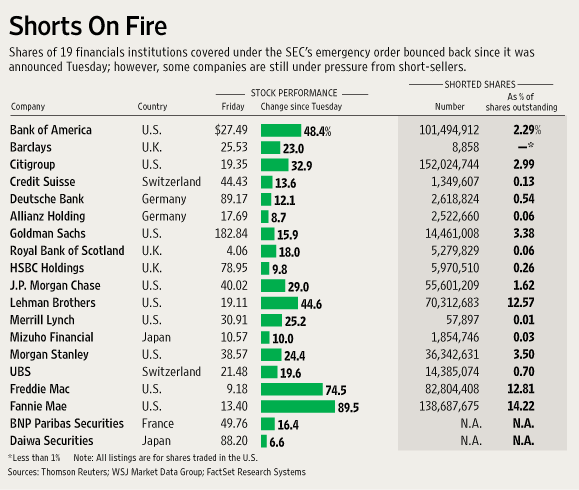How to execute a short sale
Post on: 16 Март, 2015 No Comment

Key Points
- Learn how to execute a short sale and the risks involved. Find out how to research short sale candidates using StreetSmart Edge®. Understanding short sale mechanics may help you enhance your ability to identify changes in stock trends.
A common saying on Wall Street is: The bulls ride the escalator and the bears ride the elevator—meaning that markets tend to decline faster than they rise. Short selling is a technique that traders can use to profit during these periods when the markets in general or a stock in particular declines.
Here, we’ll take a look at how short selling works, as well as the risks involved. We’ll also discuss how to research potential short sale candidates using the tools in StreetSmart Edge.
What is short selling?
Many traders focus only on buying stocks, which is also referred to as buying long, because the shares are said to be held long in their account. In this scenario, the goal is to buy low and sell high.
Selling short is the same concept, but with the sequence reversed. Traders identify a stock that they think may decline. Then, they borrow the stock from their brokerage firm and sell it with the expectation of buying it back later at a lower price and thereby realizing a profit.
The mechanics of short selling
As we mentioned, in order to sell a stock short, the trader must be able to borrow shares of that stock from his brokerage firm to deliver to the buyer of those shares. As a result, short selling may only be accomplished in a taxable, margin-enabled account. Selling short may not be done in retirement accounts, where margin borrowing agreements are prohibited by IRS regulations.
Any short sale must be marked as such on the order entry ticket in order to distinguish short-sold shares from shares sold long from a trader’s account. For example, review the order entry in the StreetSmart Edge trading window below.
Order Entry: Sold Short
Source: StreetSmart Edge. 1 See disclosures below.
In order to close out a short sale, or cover a short position, a trader would simply buy shares of the stock. There’s no distinction between buying to cover a short position and buying to initiate a new long position.
The risks of short selling
It’s important to know the risks of short selling. The most obvious risk is that instead of declining the stock might rise, forcing the trader to buy it back at a higher price than the short sale was initiated, resulting in a loss of capital. On the surface, this seems no different than buying the stock with the expectation it will rise in value, only to see it decline instead. However, with short selling there’s a catch.
When you are long a stock, if it declines to zero, the most you can lose is 100% of your investment. If you are short a stock, the stock price can theoretically rise an unlimited amount, potentially resulting in more than a 100% loss.
This is the first of several reasons why I believe short selling is more difficult than buying long.
Now let’s turn our attention to the not-so-obvious risks of short selling. The first is that shares may be unavailable to borrow in order to sell short and the trader may not be able to initiate a short sale. In this case, shares are said to be hard to borrow.
Another not-so-obvious risk is that once shares have been borrowed and a short sale has been initiated, a trader can receive a forced buy-in. This means that the original owner of the shares borrowed through the margin account wishes to sell them, and no other shares are available to lend. The trader who shorted the borrowed shares is then forced to buy those shares back and cover his short position so that the original owner is not inconvenienced. The short seller has no control over this event and it may occur at any time.
Additionally, if the stock pays a dividend, the short seller is responsible for paying the dividend, which adds to the cost of a short sale and reduces the potential return.
The short selling process
In previous articles, we discussed trading as a four-step process:
1. Screen. Look for new companies to consider
2. Research. Analyze these companies using both fundamental and technical analysis
3. Execute. Plan and execute your trade
4. Monitor. Evaluate if the trade is still valid and adjust as needed
We can also apply this process to short selling, but we’ll be looking for companies possessing the opposite characteristics of those we would want to buy long. When we screen for new short sale candidates, we look for companies with poor and deteriorating business fundamentals and stocks in confirmed downtrends.
As we research these companies with an eye toward short selling, our mission is to confirm that the characteristics we spotted in the screen are, in fact, negative.
Then, as we plan to execute our trades, we need to identify entry points, price targets for potential profit, and most importantly—stop-loss points for exit. However, in the case of short selling our stop-loss exit is above our entry price and our price target is below. We must be mindful that the stock in question can potentially rise much more than it can potentially decline.
In monitoring short sales, traders must watch for any trend change back to an uptrend.
Short selling in action: StreetSmart Edge tools
Let’s take a more in-depth look at the second step in the process—research. StreetSmart Edge’s tools can help you streamline your trading and quickly evaluate both fundamental and technical data.

When you click on the Launch Tools button below, you can see a list of the tools in StreetSmart Edge. Here, we’ll look at the Research and Chart tools to help you understand the fundamental picture of a company and the technical prospects of its stock.
Source: StreetSmart Edge.
Let’s first review the Research tool, which can help us evaluate how a company is performing as a business—often referred to as fundamental analysis. While there are many metrics in fundamental analysis, perhaps one of the most important is the earnings per share (EPS) growth. Eventually, a stock’s price is likely to move in the same direction as the company’s EPS—higher or lower. A closely related fundamental metric is, sales growth over the past year and/or quarter. When looking for short sale candidates, traders should consider companies with negative EPS growth and sales growth rates.
The Research tool has four tabs of fundamental analysis data and in the screenshot below, the Metrics tab has been selected. Please note that this is a partial screenshot and that more data is available on this screen.
In the example of Hewlett-Packard (HPQ) shown below, EPS growth has declined by over 36% year-over-year (yoy) and sales have declined by 3% both for the quarter and for the year. These are the attributes of a potential short sale candidate but before placing the order, we need to evaluate the trend in price, which is part of technical analysis.
Look at the Fundamental Metrics
Source: StreetSmart Edge. 1 See disclosures below.
While fundamental analysis looks at the business performance of the company, technical analysis can help evaluate how the stock itself is performing. Even if the fundamentals are poor, the stock could still be in an uptrend, especially in a bull market. Selling short into an uptrend is exactly the same problem as buying a stock that is in a downtrend—fighting the trend!
Another common problem that can make short selling more difficult is when the stock has already declined significantly. In this case, because the stock can only fall to zero, much of the move may have already happened. Remember that a stock will only go to zero in the case of total bankruptcy. But it can often limp along at low prices for years.
A short sale should be placed early in the downtrend or not at all. Remember the adage that, Bears ride the elevator. Downtrends tend to be sharper and steeper than uptrends and if you miss the early part of the move after the trend changes, your best bet may be to avoid a short sale.
This is exactly the case for Hewlett-Packard (HPQ), as shown in the chart below. The stock has dropped by half since the trend changed to down in March 2011, but the majority of the decline occurred within the first six months of the downtrend.
Look at the Trend
Source: StreetSmart Edge.
Bottom line
Short selling can be an interesting way to potentially profit in declining markets, but it’s important to understand the risks. In addition, I believe that as traders understand the concept of short selling and how to apply it, they may be able to improve their overall results by enhancing their ability to identify changes in stock trends.














